Adjustable dumbbells vs fixed
Adjustable dumbbells vs fixed
– 12 things to consider before choosing your dumbbell
This comparison aims to help you decide whether adjustable dumbbells are worth the investment or whether you should stick with fixed dumbbells.
- We'll look at factors such as cost, space and convenience, durability and maintenance, versatility, safety, and personal preferences.
- And by the time we get to the end, we'll see which of these two gym tools wins the "dumbbell wars." Bring it on!
Definition of adjustable and fixed dumbbells
Adjustable dumbbells are pieces of weightlifting equipment that allow you to adjust the weight of the dumbbell by adding or removing weight plates to the handle. They're the Transformers of weightlifting equipment, akin to having a whole gym in one compact and convenient package at your fingertips.
Fixed dumbbells, or standard dumbbells if you will, have, as the name suggests, a fixed weight that cannot be adjusted. They come in different sizes (the heavier, the bigger) and shapes. Round, hexagon, square, you name it.
Advantages of using dumbbells for strength training
Dumbbells are a versatile piece of equipment that can be used to train almost every muscle group in your body. They offer a range of motion that mimics natural movement, making them great for functional training. Compare that to a weightlifting machine, where the range of motion is fixed.
So, let's jump right into the comparison of adjustable vs fixed dumbbells.
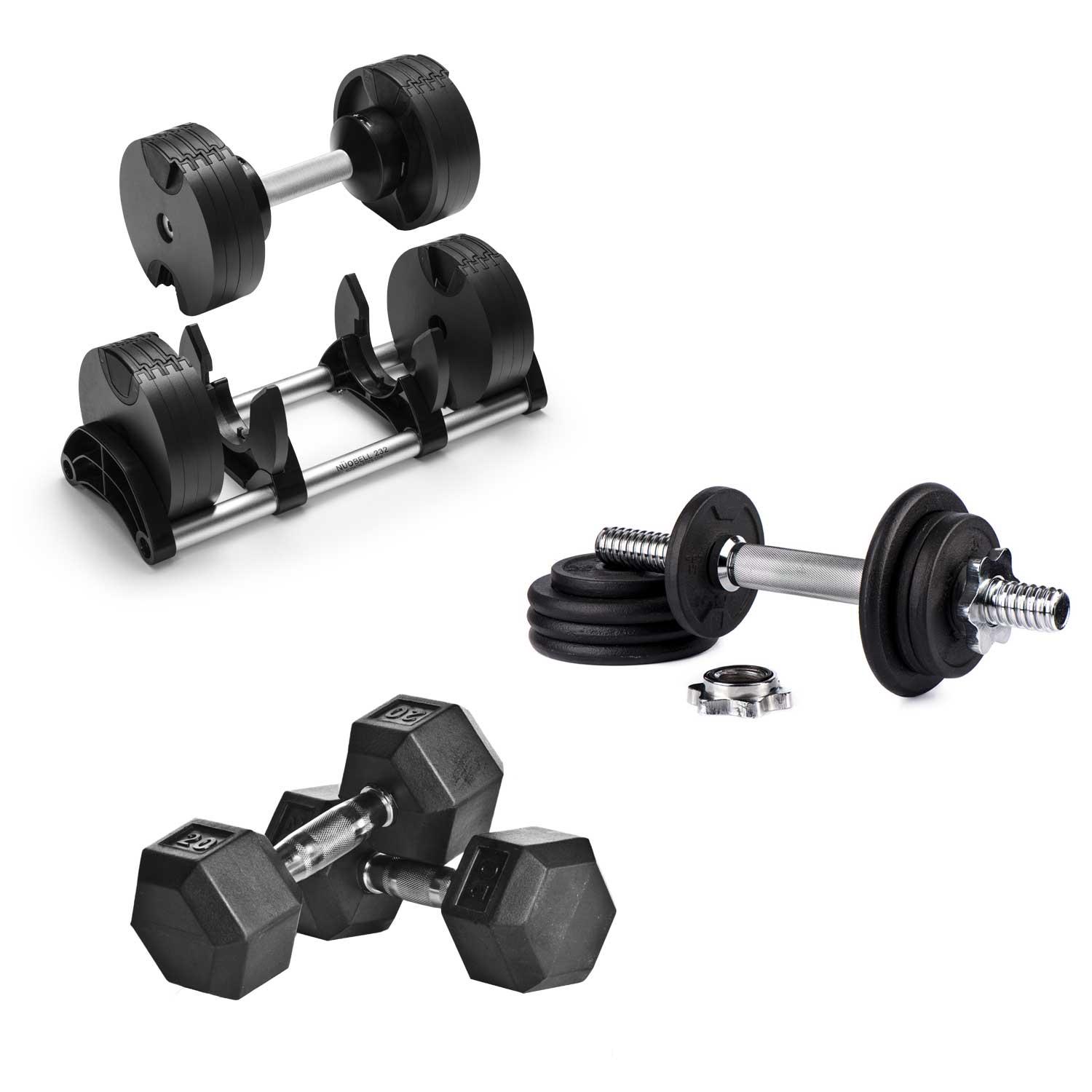
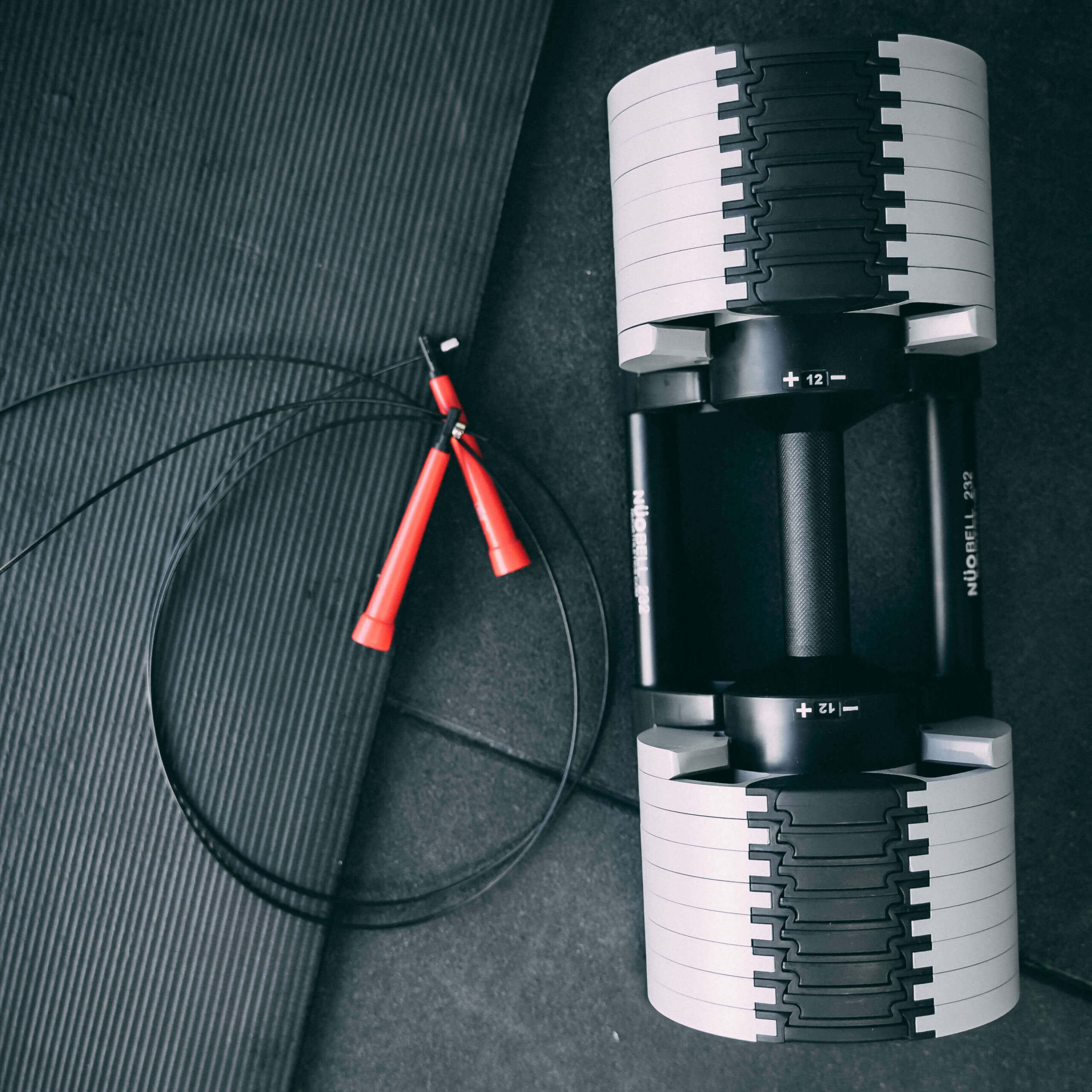
1. Weight range
The weight range of adjustable dumbbells compared to fixed models is the same when talking about the entire weight range, from light to 50 kg/100 lb at the top end. Both types of dumbbells offer low weights from 1 kg /2 lb up to 50 kg / 100 lb, and all the weights in between.
Increments
Adjustable dumbbells have weight increments of 1,5–2 kg, from the lowest to the highest. Fixed typically have increments of 1 kg in the lower weight span. The steps usually tick up in 2,5 or 5-kg increments when the weight increases past that.
2. Maximum weights of dumbbells
The heaviest dumbbells can be used for exercises that target large muscle groups that require a high level of strength and stability, such as the chest, back, and legs. Typical exercises include:
- Chest press
- Rows
- Squats
- Lunges
So, if you're up for the challenge, grab the heaviest fixed dumbbells you can find and start lifting like a champ. Make sure to have a spotter nearby unless you want to end up like a turtle stuck on its back. And don't be surprised if you feel like you've been hit by a bus the next day! And possibly a turtle too.
Adjustable dumbbells come at a max weight of 50 kg. So if you are looking for seriously heavy dumbbells, from 50–100 kg, fixed would be your best option.
3. Cost
Adjustable dumbbells cost comparison to fixed dumbbells
Ah, the age-old question: are adjustable dumbbells worth it? Well, that depends. However, if you're on a crazy tight budget, you can always use your water bottles and fill them with sand, right?
Back to the question: Adjustable dumbbells can be more expensive than standard dumbbells if you buy one pair of adjustable vs one pair of fixed dumbbells. But let's look at what you get: the adjustable dumbbell offers roughly 10–15 different weight options within the same dumbbell. And the weight options of the fixed pair? Well, if you buy a pair of 10 kg, that's what you get.
With that being said, it's best to look at the long-term value.
Long-term cost considerations
Fixed dumbbells might tempt you with their lower price tag, but that can be a slippery slope.
As you progress in your strength training journey, you may need different weights to push your limits. And with fixed dumbbells, you'll have to keep shelling out the dough for additional sets. It's like trying to save money by buying a one-size-fits-all shirt, only to realize it's too small a few weeks later.
But if you're not one for chasing those massive gains and only need a handful of weight options, standard dumbbells might do the trick. They're like a reliable old friend who's always got your back (or rather, your biceps)—no frills, no fuss, just simple and effective.
Adjustable dumbbells are like the chameleons of the weightlifting world, continuously adapting to whatever exercise you throw their way. And let's remember that they're a one-time investment that can last for years.
Think about that. Instead of constantly shelling out cash for new dumbbells or a fancy gym membership, you can invest wisely in adjustable dumbbells and have the freedom to customize your weight without ever leaving your home. It's like having your gym, minus the annoying guy hogging the squat rack.
So, if you're looking for a cost-effective and flexible option to take your strength training game to the next level, adjustable dumbbells might be the answer.
4. Storage and transport
Storage
Adjustable dumbbells are a game-changer if you have limited space in your home gym (read: lounge). They come with a stand or case that easily stows away in a closet or under the bed. Fixed dumbbells, on the other hand, require more space and a dedicated weight rack, which can take up more space than your pet elephant (he is cute, though, and you should see him water the plants).
Transport
First up, adjustable dumbbells. These sleek and versatile beasts are designed to make your life easier. Need to take them to the park for an outdoor workout? No problem! Adjust the weight to your desired level and secure the plates in place.
Now, let's move on to fixed dumbbells. Want to take them along for a workout session? Not a problem if you plan to use only one or two pairs of different weights. But if you need a range of weights for a full-body workout, you'll have to bring multiple sets or your elephant helper. Bulky? Hey, he's trying to slim down! Oh, the weights. Yes. They're weighty, alright.

5. Different shapes of dumbbells
Both adjustable and standard dumbbells come in different shapes, each with different properties; from hexagon shaped to round and even squared. Of course, which one you favor is as personal as the topping of your favourite pizza, but there are some things to know about the different shapes.
1. Hexagon
Hexagon dumbbells are a type of weightlifting equipment shaped like - you got it - a hexagon, with six sides, rather than a traditional round shape. The hexagon shape helps prevent the dumbbell from rolling away and provides a more stable base for exercises such as push-ups, renegade rows, and other activities where the dumbbell sits on the ground. Hexagon dumbbells come in various sizes and weights, from small 4-pound dumbbells used for light exercises to very heavy ones used for strength training.
+ stays in place when it gets put down on the floor
+ won't break as easily when hitting the floor due to one fixed weight on each side
- can "bounce away" when dropped to the floor
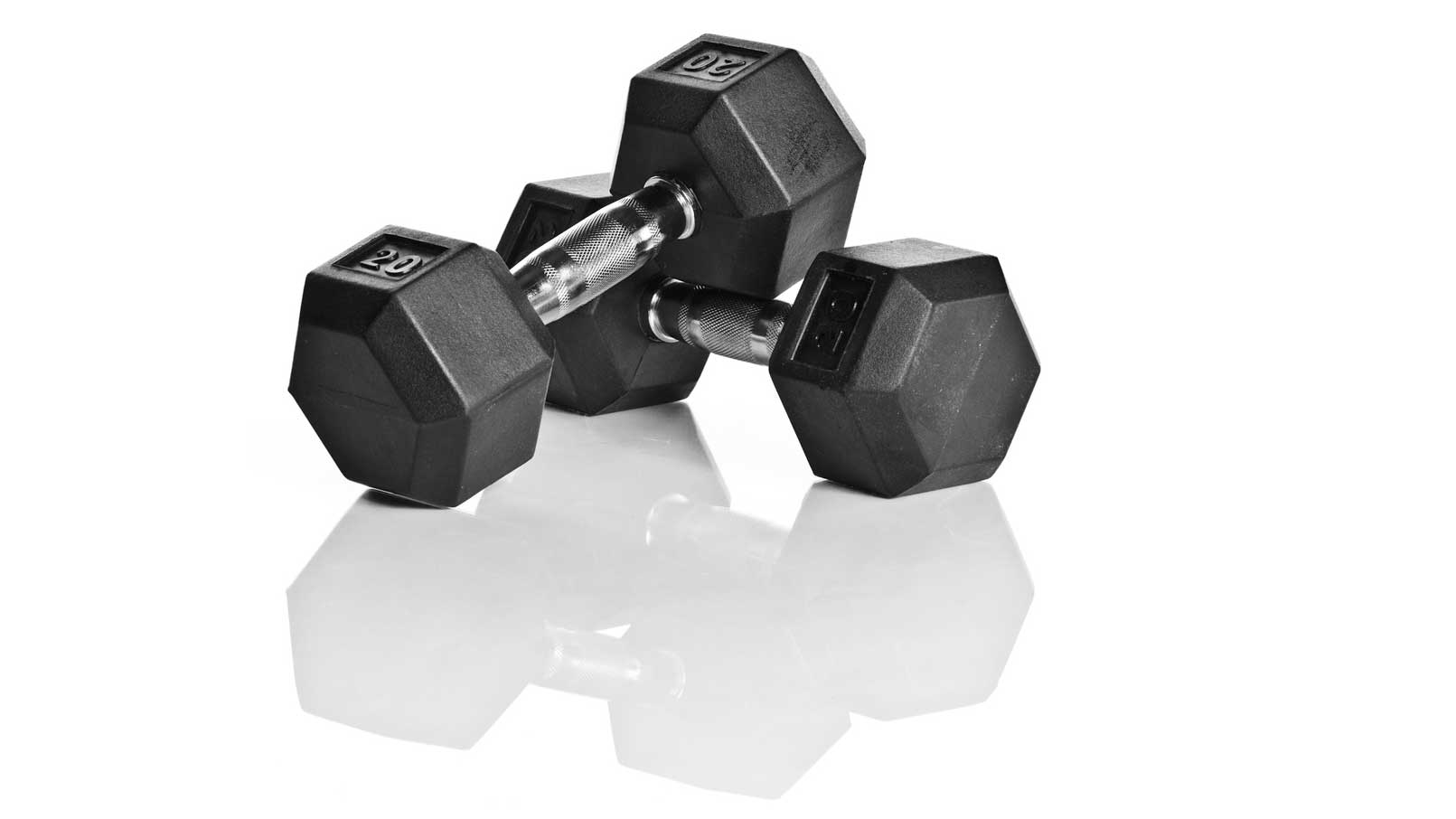
2. Round shape
As the name implies, round dumbbells are fitted with circular weights, with two equal-sized weights on either end of a central handle. They are typically cast iron but can also be made of steel, rubber or other materials.
Round dumbbells come in various sizes and weights, from small 1-pound dumbbells used for light exercises to very heavy ones used for strength training. They can be used for a variety of exercises, including bicep curls, tricep extensions, shoulder presses, chest presses, squats, lunges, and more.
+ Easy to use without feeling too "big" due to their sleek shape
+ Well balanced when in use due to the balance on each side
- Can easily roll away when you put them down on the floor
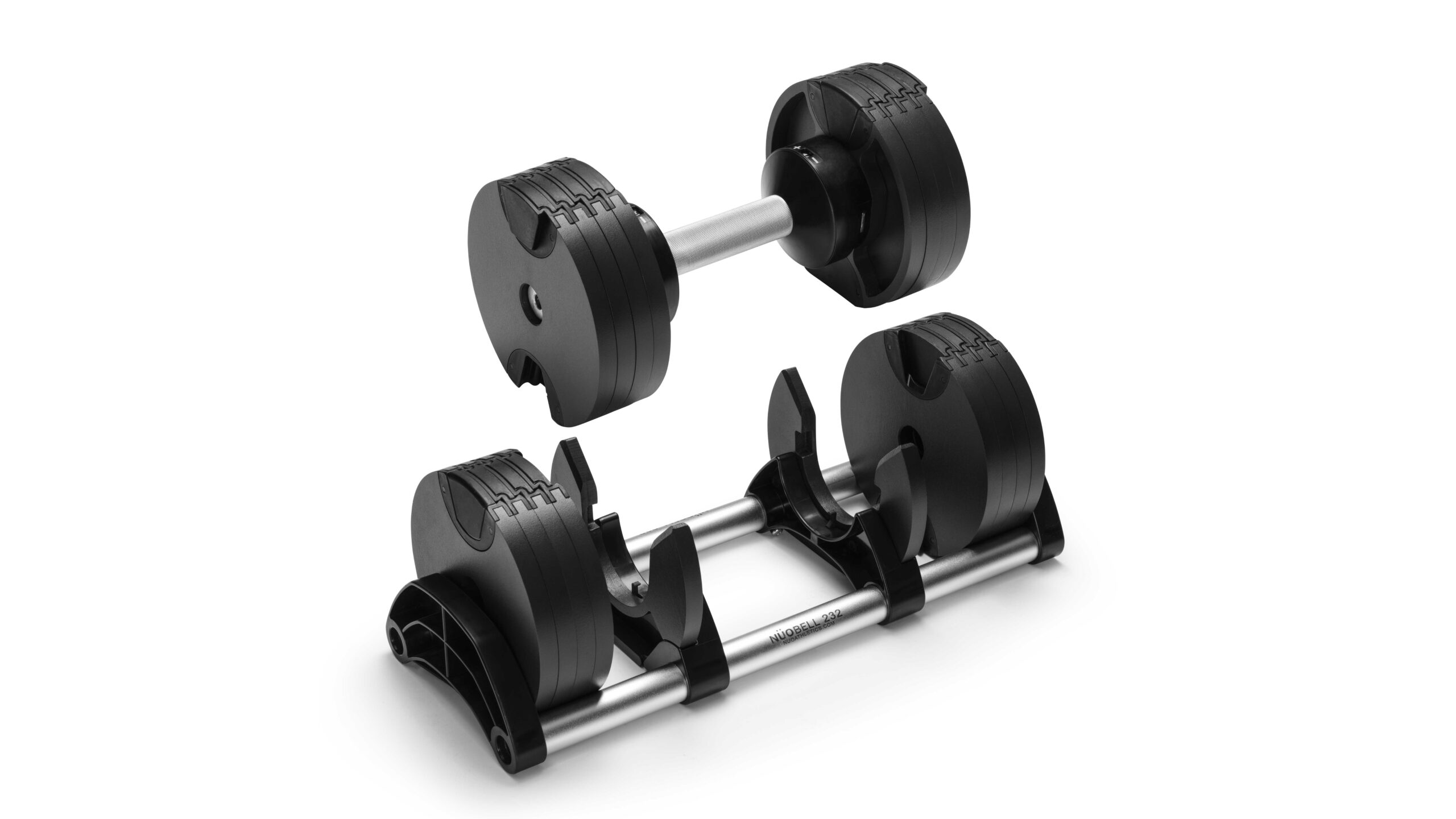
3. Square shape
Square dumbbells are relatively uncommon, with four equal sides and two equal-sized weights on either end of a central handle. They are typically made of steel or iron and can be coated in rubber or urethane for protection and grip. Squared dumbbells come in various sizes and weights, from small 5-pound dumbbells up to 90 pounds for the more experienced user.
+ Often adjustable weights
- Uncomfortable to use for your wrists
- Can feel big to use in concentrated exercises, like biceps curls or triceps extensions
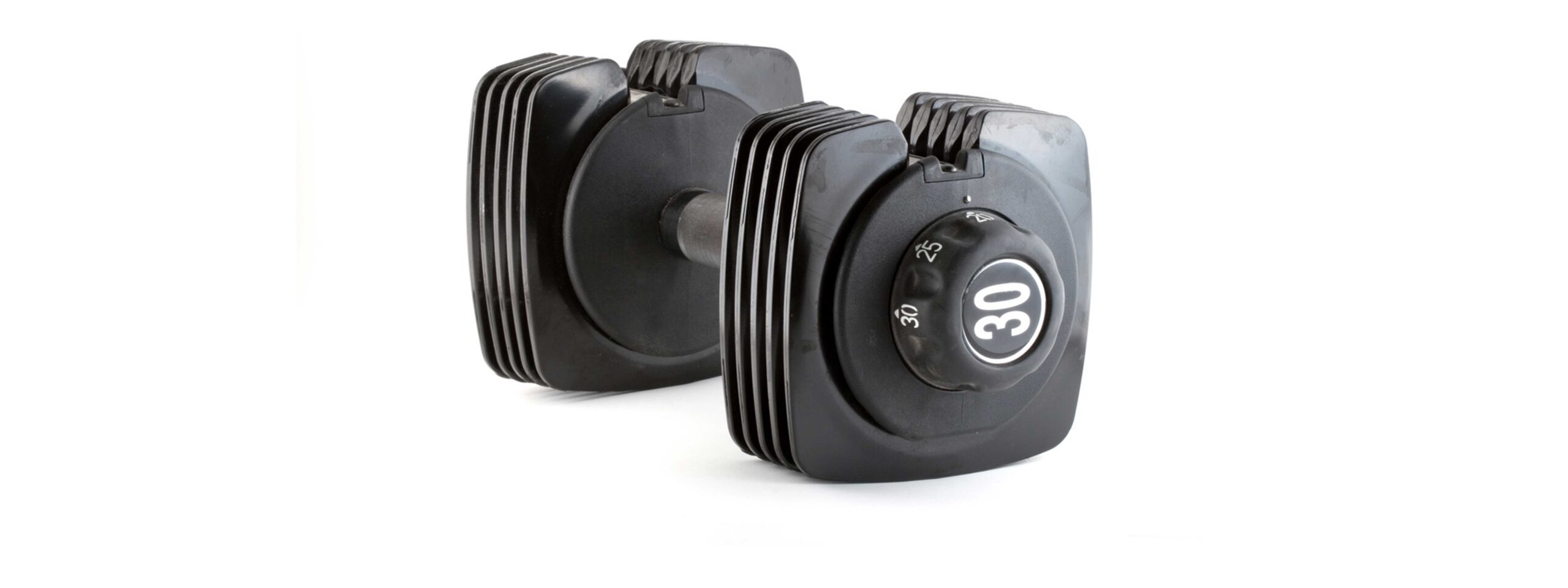
6. Durability
Fixed dumbbells are generally made with no moving parts compared to adjustable dumbbells and hence, present fewer opportunities for parts to wear out or break over time.
Adjustable dumbbells have more parts that can break or wear out over time. For example, the locking mechanisms that hold the weight plates in place can become worn or damaged with frequent use, requiring replacement. However, high-end adjustable dumbbells are usually made of top-quality materials that can last years with proper maintenance.
One thing to remember is that adjustable dumbbells can't be thrown or dropped on the floor as you could with fixed dumbbells. So you'll have to work on expressing your inner animal instead.
Be aware of copies – they can be dangerous
In the world of adjustable dumbbells, there is an unfortunate presence of unscrupulous scammers producing knock-off versions. Pay close attention to what you are buying; copies are not constructed in the same way as the original and may pose potential risks. Picture this: weight plates unexpectedly fall off, causing damage not only to your floor but also putting you in harm's way.
Original dumbbells are reliable
Fortunately, original adjustable dumbbells eliminate this concern entirely. Take notice of this aspect when selecting the perfect set for your training needs. At a first glance it can be challenging to determine whether the dumbbell is an original or a copy. However, a practical step to ensure you acquire an original product is to reach out directly to the original brand. They can provide valuable guidance on identifying the authenticity of their merchandise.
7. Materials
Most of today's more modern dumbbells are made of solid iron or treated steel, sometimes with a rubber or neoprene coating. The coating is there to protect the inner material and to make the dumbbell more comfortable to hold.
Plastic is sometimes used, but only for dumbbells of lower weight. Since plastic is significantly lighter per cm3, heavier dumbbells are not made from plastic, as they would be far too bulky. One benefit of plastic dumbbells as opposed to those made of other materials, is that they are cheaper, but on the downside, they tend to break more easily.
A dumbbell made of iron or steel is thus far more durable than the same made from plastic. So even though a plastic version isn't necessarily bad, you will be more confident that a steel or iron version will withstand drops (intentional or unintentional) or other accidents better.
8. Versatility
a) Ability to adjust weight for different exercises
When it comes to versatility, adjustable dumbbells are like the chameleons of gym equipment - they can adapt to any exercise and any level of improvement. They offer the flexibility of adjusting the weight for different exercises, which can be especially beneficial if you're doing circuit training. Fixed dumbbells, on the other hand, don't adapt, so you need a whole set to get a well-rounded workout.
b) Adaptability for different workout routines
If you get bored quickly with the same workout routine, adjustable dumbbells are like a new best friend who knows all the cool moves. They are versatile and can be used for a variety of workout routines, from strength training to HIIT workouts. Fixed dumbbells, on the other hand, are limited to the weight they come in, which can limit your workout routines and creativity.
c) Ease of use and transition time between exercises
When it comes to ease of use, and transition time between exercises, the right pair of adjustable dumbbells are the Swiss Army Knife of home gym equipment. They're easy to use and allow you to adjust the weight between exercises quickly. But don't be fooled. Not all adjustable dumbbells work in the same way. So make sure you choose a model that offers quick weight adjustment.
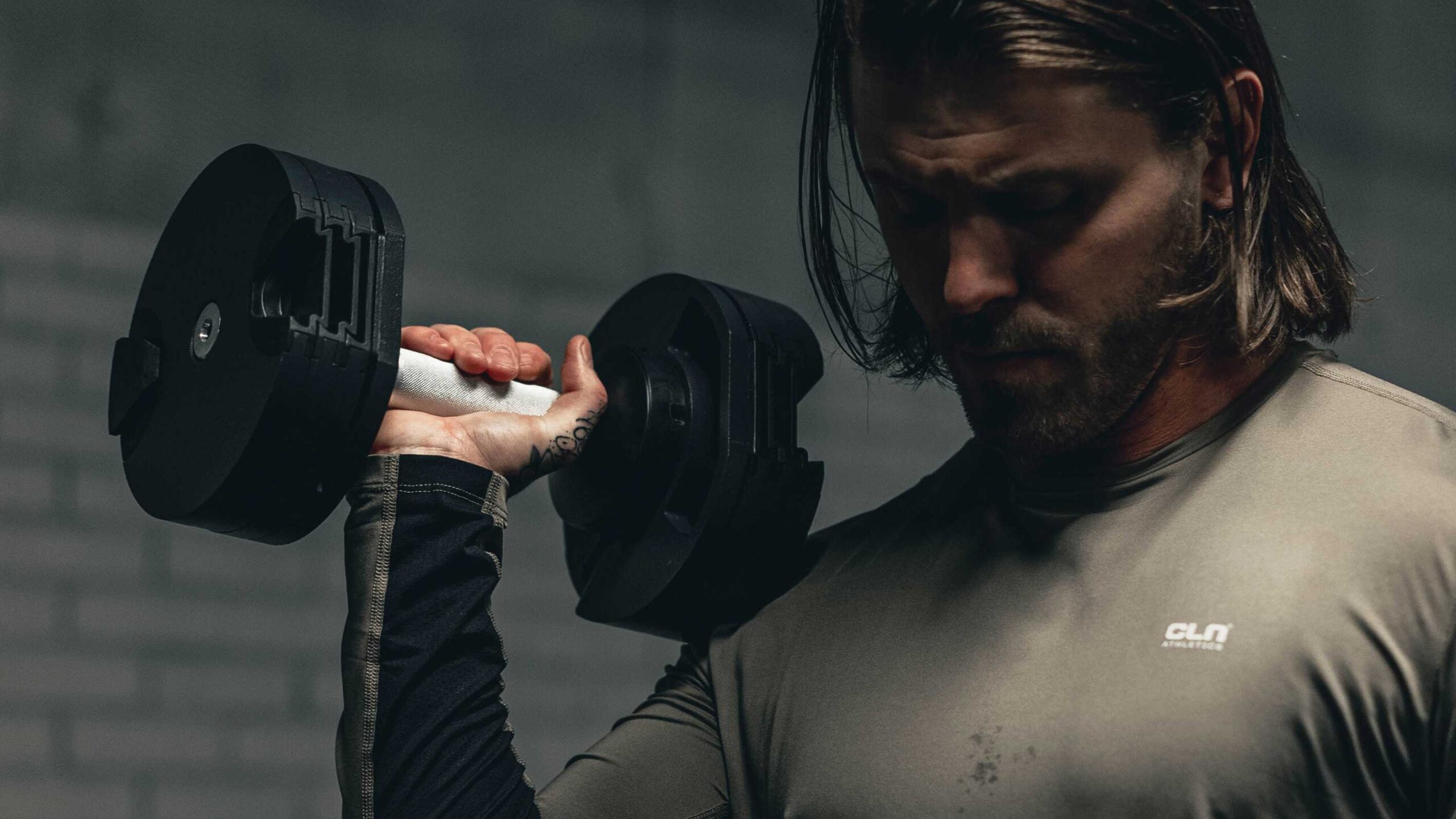
9. Range of motion
Both adjustable and fixed dumbbells may pose a range of motion limitations, the main one being the size and shape of the dumbbell itself. The extent of these limitations will depend on the specific brand and model of the dumbbell, as well as the exercise being performed and the user's body type and mobility. In addition, certain exercises may be limited by the range of motion allowed by the shape. For example, if the dumbbell is too bulky or irregular, it may be difficult to perform exercises that require a full range of motion, such as dumbbell flys and triceps extensions.
Choose a sleek shape
Hence, it's crucial to select dumbbells with as sleek shape as possible that enable a full range of motion for the exercises you plan to perform. One other thing to consider when talking about range of motion for adjustable dumbbells is the size of the dumbbell at different weights. When setting a lower weight, you want the dumbbell to be no bigger than it needs to be. Some models are the same length no matter the weight you load, and that may lead to difficulties when performing certain exercises.
Preferably, you want to look for an adjustable dumbbell that is as small as possible in low weights and then gets bigger only when you add weight:
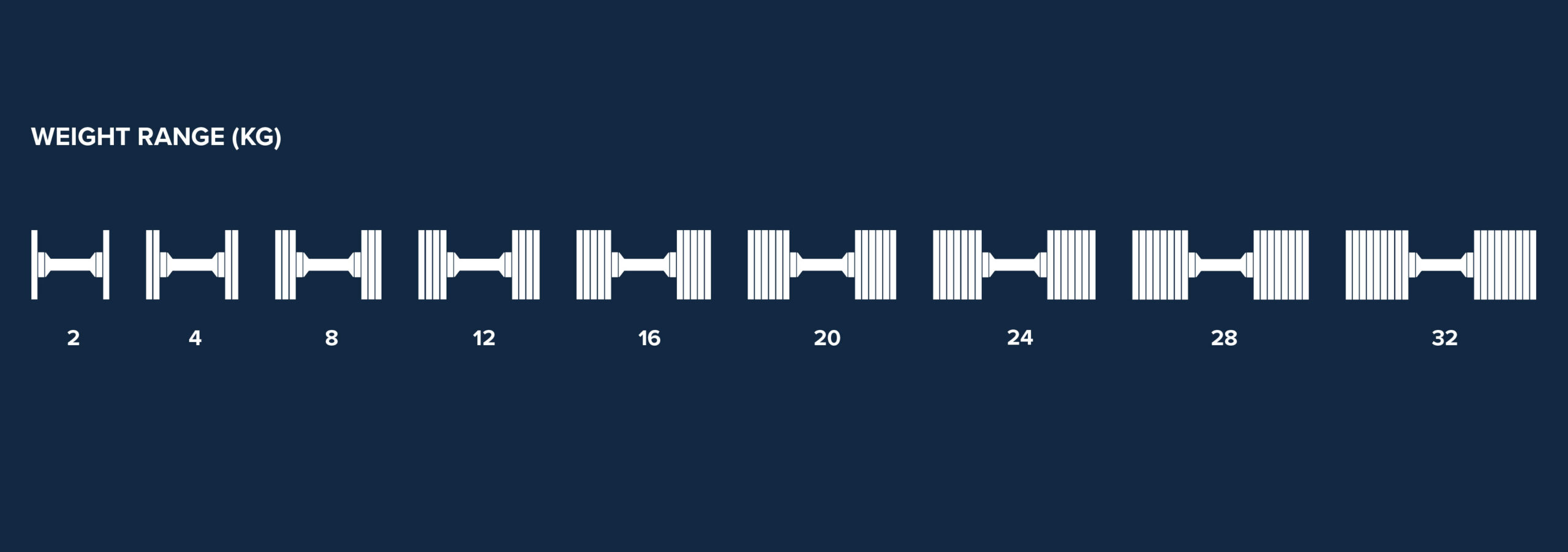
A smooth adjustable dumbbell is small in low weights, and get bigger when weight is added, compared to other models that have the same (often bulky) size no matter the weight.
Neglecting range of motion can lead to muscular imbalances and reduced functional mobility, potentially hindering overall athletic performance and day-to-day activities. Consulting with a fitness professional can ensure that you select appropriate dumbbells for your exercise routine and can also guide proper exercise form and technique. Don't underestimate the importance of range of motion – it's a vital aspect of any effective strength training program.
10. Safety and Risk of Injury
Stability and balance
If stability and balance are top of mind, fixed dumbbells could have the upper hand over adjustable models as they are made from solid metal, like the old oak tree in your backyard (except trees are wooden, but you get the point!). Adjustable low-quality dumbbells may wobble or shift during use, which can lead to injury if not used correctly.
However, adjustable dumbbells usually have safety features, such as locking mechanisms, to prevent accidents. And the higher quality of the dumbbell, the more probability of a safe locking mechanism.
In any case, using the dumbbells correctly and safely is essential to prevent accidents. Remember, your safety is more important than how much weight you can lift.
11. Fitness Goals and Personal Preferences
Matching dumbbells to fitness goals
Meeting your fitness goals is how you progress with positivity. To keep those high fives coming, adjustable dumbbells act like your personal fitness genie - they can grant your every wish (within reason, people!). Adjustable dumbbells offer more versatility and flexibility, which can be beneficial if you're doing circuit training or have a variety of fitness goals. Fixed dumbbells, on the other hand (excuse the pun), are more specific to certain exercises and can be beneficial for those with more specific fitness goals or the need for only a few different weights.
Personal preference
Personal preference is also a factor when choosing between adjustable vs fixed dumbbells. Some people prefer the convenience and versatility of adjustable dumbbells, while others prefer the simplicity and durability of fixed dumbbells. Choosing the type of dumbbell that suits your preferences and fitness goals is essential. Think of it like choosing between ice cream flavors - both might be delicious (except pistachio - you know I'm right), but it depends on your taste.
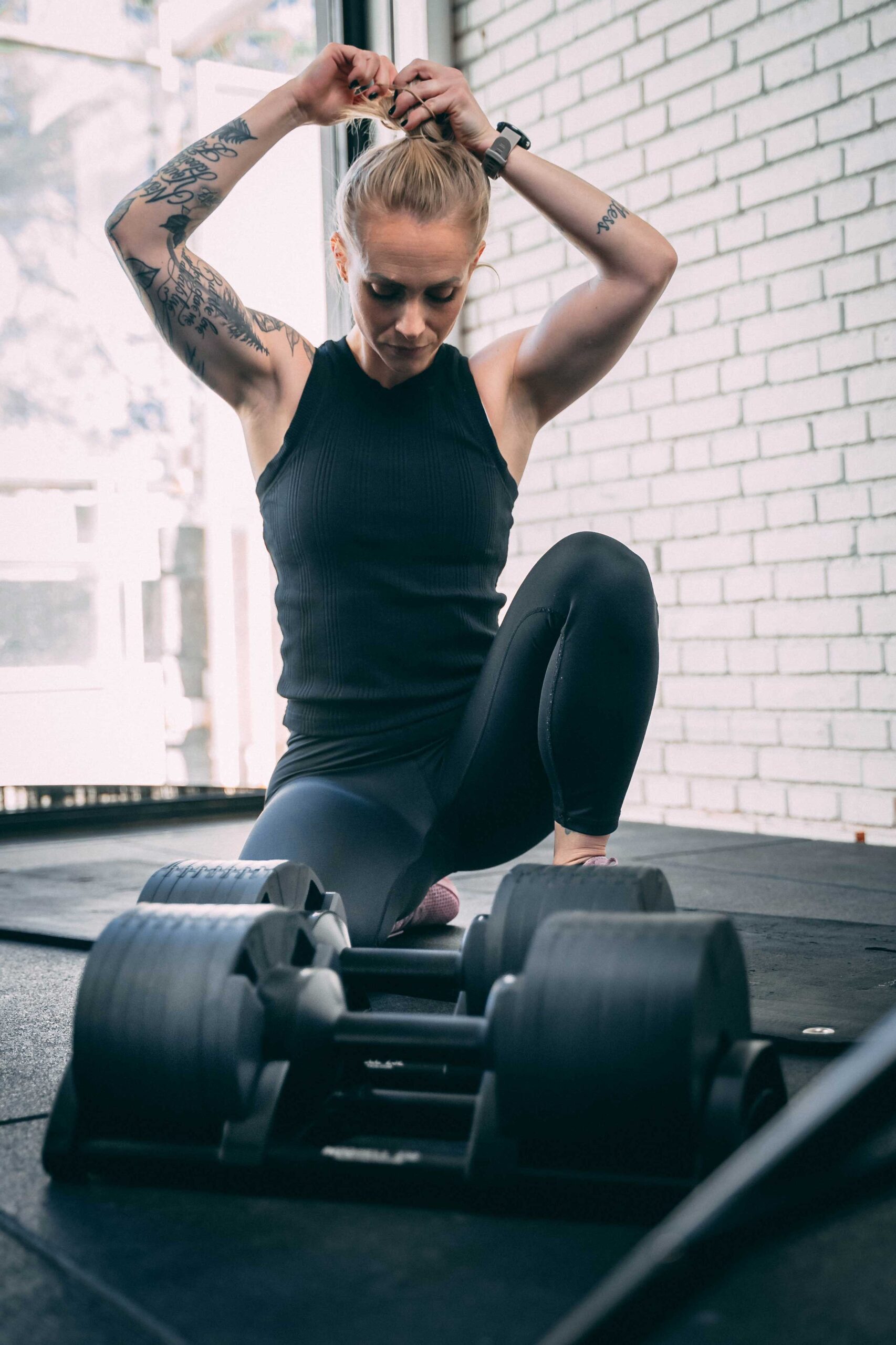
12. Considerations for fitness level and experience
Your fitness level and experience also play a role in choosing between adjustable vs fixed dumbbells. However, it's not as easy to say that one type of dumbbell always fits just one fitness level.
Both adjustable and fixed can suit both newbies and experienced athletes alike.
If you're new to strength training, you might want to go for
adjustable dumbbells if you
- are not sure of the level of weights would suit your needs
- want to be able to try out different weights
- want to have the opportunity to progress with heavier weights as you get stronger
- want to perform whole-body workouts
fixed dumbbells if you
- know the exact weights you require
- plan to execute only a few numbers of exercises
- don’t feel the need of strength progression
If you're experienced in strength training, you might want to go for
adjustable dumbbells if you
- want to build muscles and get stronger according to progressive overload and increase weight gradually in small steps
- want to save time in your training routine and fast switch between many different weights. Especially true for supersets and drop sets.
- looking for versatility and to challenge all your different muscle groups
- want to avoid injuries caused by sudden jumps in weight – instead adjust the weight in small increments as adjustable dumbbells offer appropriate weight adjustment
fixed dumbbells if you
- only have a few specific needs of the weights
- know that you won’t need to frequently change weights
- want to be able to throw the dumbbells on the floor
- need a super heavy dumbbell (>50 kg) that is not attainable for adjustable dumbbells
Conclusion
In conclusion, choosing between adjustable and fixed dumbbells can be tough. They both have their unique benefits and advantages. Focus on what works best for you. After all, choosing the right equipment is a personal decision – it's all about what makes you happy and satisfied.
While adjustable dumbbells are often more expensive upfront, they are generally a more cost-effective option, given how many in-built weights they come with. And that adaptive nature saves you money compared to buying a complete set of fixed dumbbells in different weights. However, adjustable can be more expensive if you only need a few pairs of different weights.
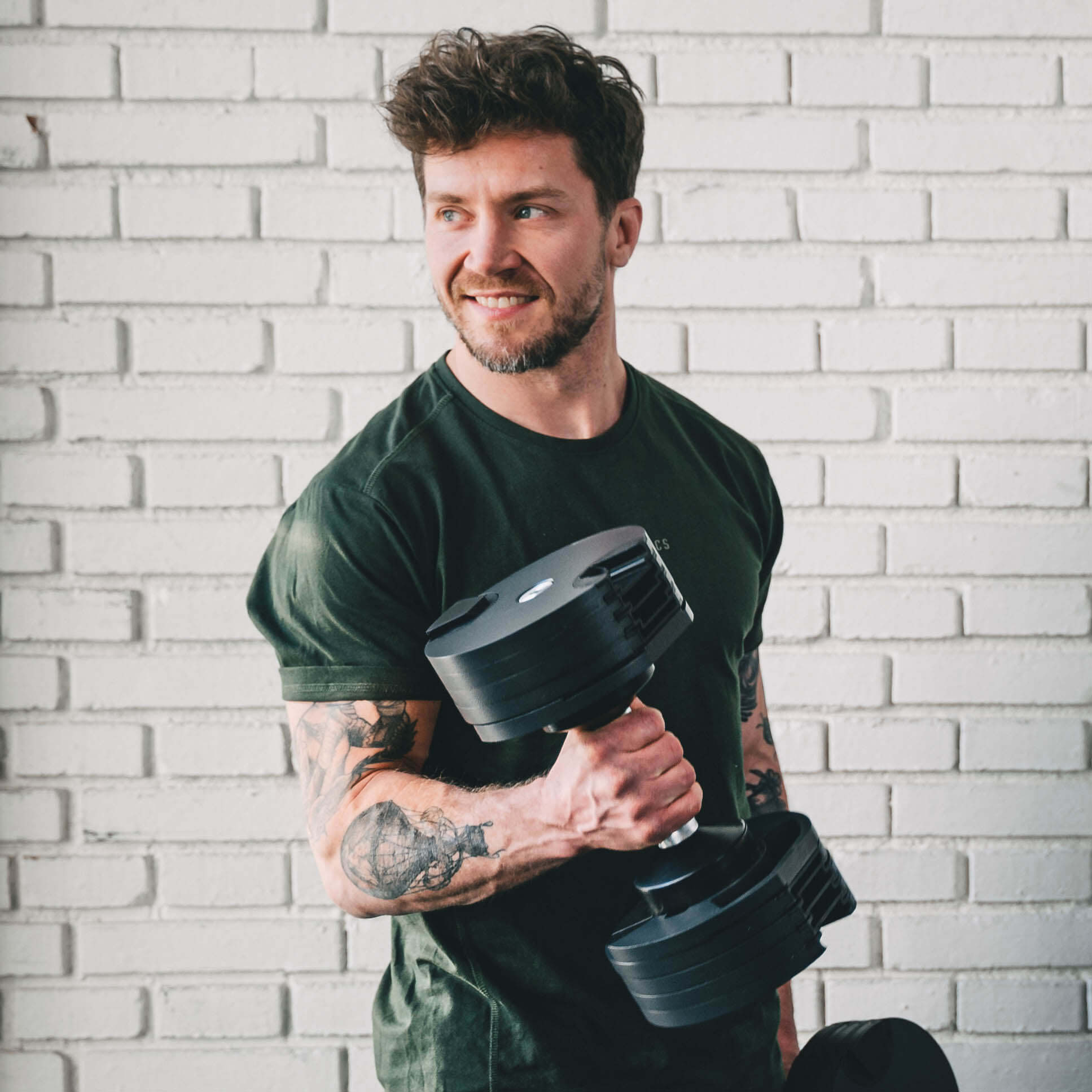
Conversely, fixed dumbbells are simpler and more durable but may require you to purchase a complete set of different weights, which can be more expensive in the long run. However, fixed dumbbells may be a better option if you have a specific weight in mind that you'll use regularly and won't need to adjust. Either way, never forget that elephants are for life, not just for helping you transport your dumbbells.
Space and convenience
From a practical standpoint, space and convenience are major factors. Do you have a lot of space at home, or do you struggle to find space for all those weight plates? Is your living room starting to look like a garage sale, with equipment of all sizes scattered across the floor? Are you constantly tripping over your weights or accidentally kicking them? Are your friends starting to question if you're a weightlifter or just a hoarder? How dare they.
Additionally, adjustable dumbbells are easier to store and transport, which can be beneficial for those who work out at home or outdoors or need to bring their equipment with them on longer trips.
What are your needs?
Choosing between fixed or adjustable dumbbells is like choosing between a Swiss Army knife and a single-purpose tool like a screwdriver. And just like a Swiss Army knife offers multiple tools in one self-contained form factor, adjustable dumbbells provide versatility and flexibility for various exercises. On the other hand, fixed dumbbells are like a single-purpose tool that offers a specific weight for a particular exercise.
Ultimately, the choice depends on your preferences, fitness goals, and budget. Some people may prefer the simplicity and durability of fixed dumbbells, while others may prefer the flexibility and versatility of adjustable dumbbells. Remember that there is no right or wrong answer, and choosing the type of dumbbell that best suits your needs and situation is most important.
Both adjustable and fixed have positive impact on your health
Whichever you choose, make sure to use them correctly and safely to prevent accidents and injuries. Whether you decide on adjustable or fixed dumbbells, both types can positively impact your life by promoting physical fitness and overall health.
Incorporating strength training into your fitness routine can have numerous benefits. It can improve your posture, balance, and flexibility, making you feel like a graceful ballerina or a nimble ninja (or both, baby!). Finally, strength training can boost your metabolism, aid in weight loss, and improve your mental health and cognitive function.
In other words, it's all good. Now go work out!